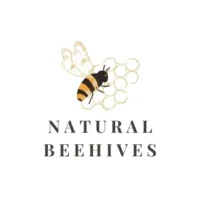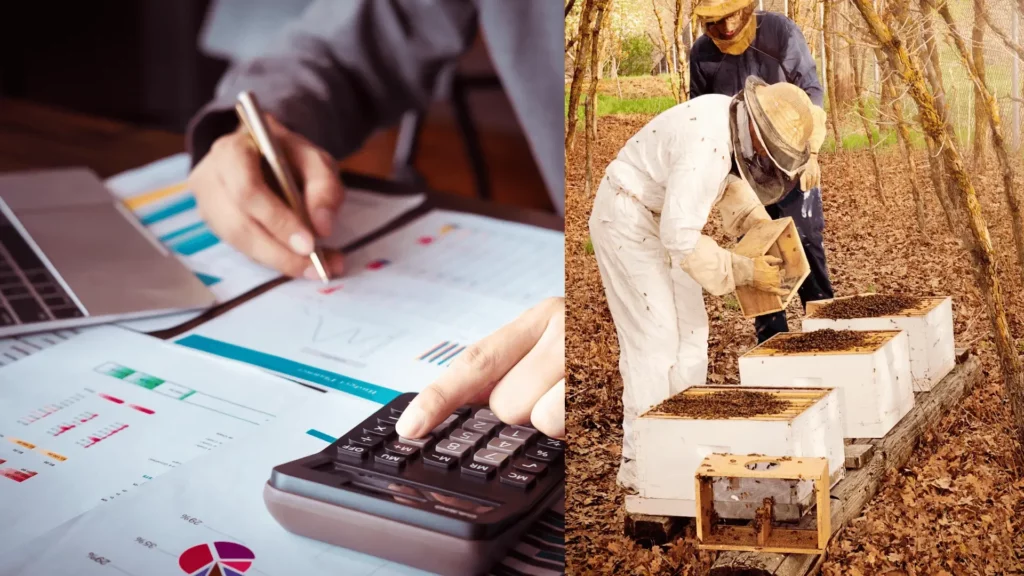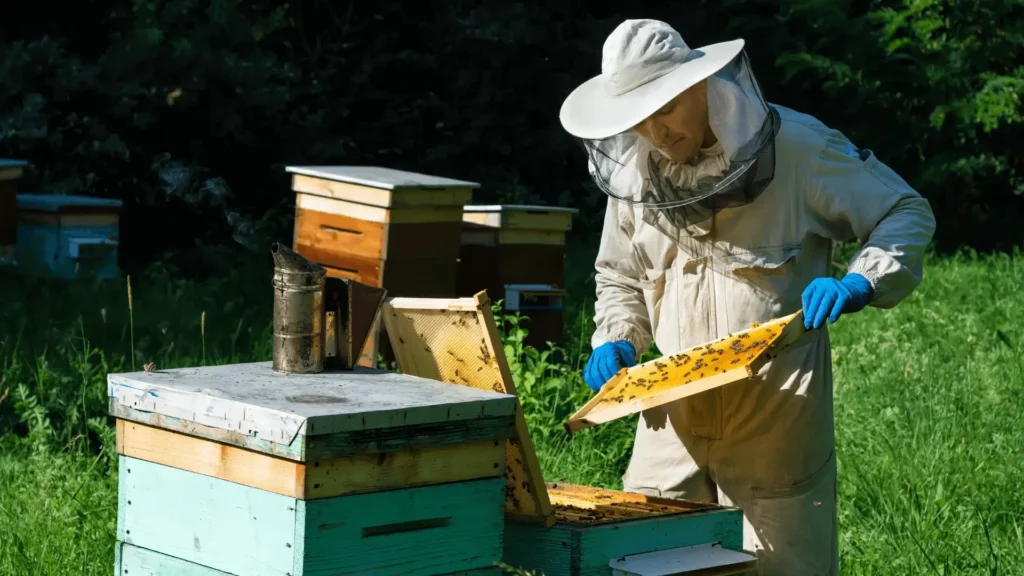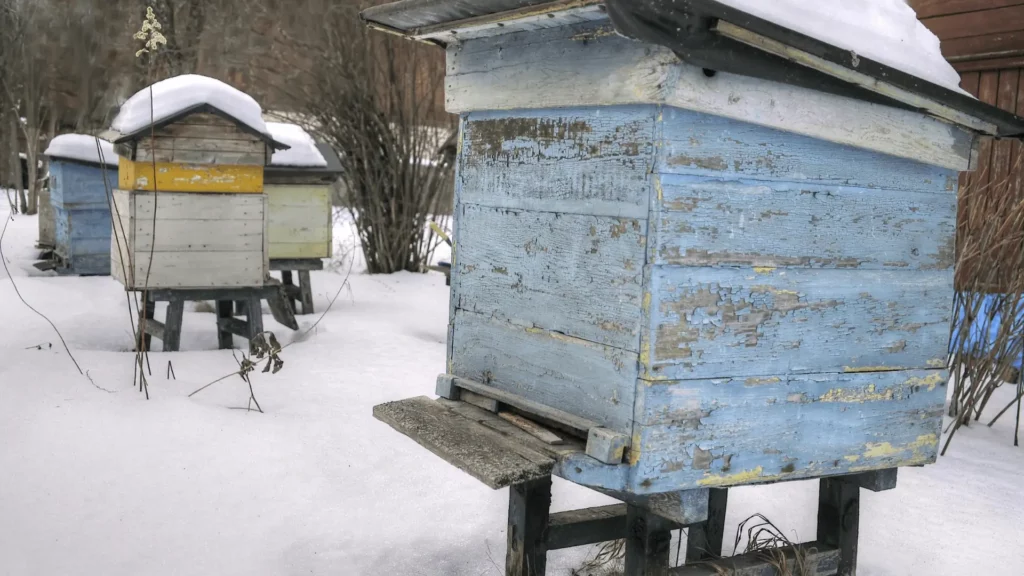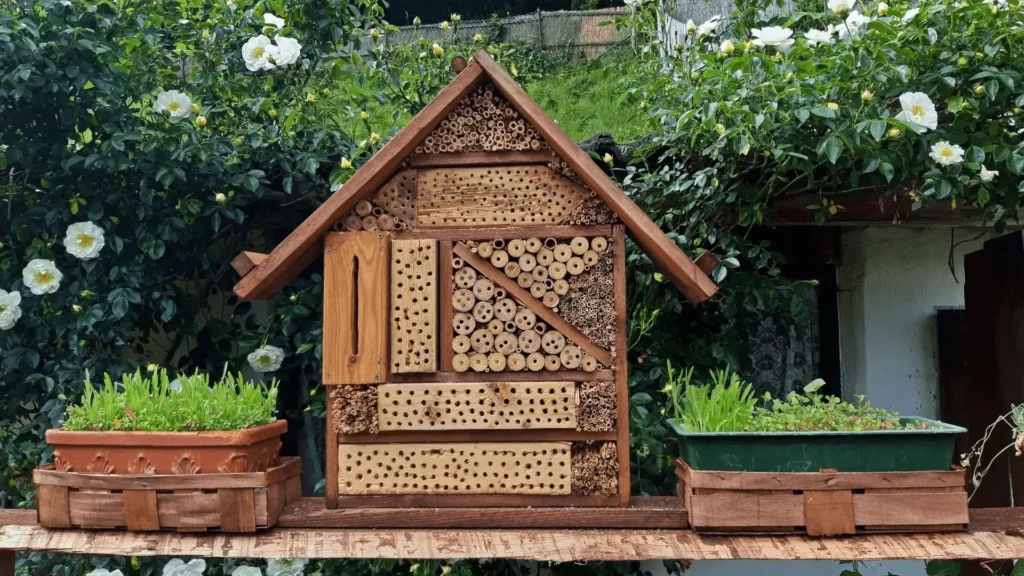
Did you know that a little human-made structure called a bee house can become the hub of activity for mason bees in your garden? These incredible insects play a vital role as pollinators, and creating the perfect bee house can attract them and provide a safe nesting place.
Imagine watching as mason bees diligently work, making arduous trips in and out of their bee house, gathering pollen to feed their offspring. It’s like witnessing nature’s own opera, where each bee has a special role to play in the pollination process.
In this article, we’ll explore everything you need to know about creating the perfect bee house for mason bees. From the basic structure and materials to the placement and maintenance, we’ll guide you through the process step-by-step. You’ll discover fascinating facts about mason bees, their life cycle, and how they contribute to the ecosystem. Plus, we’ll share useful tips and techniques to make your bee house a haven for these incredible pollinators.
Introduction to Mason Bees
Mason bees, also known as Osmia species, are a fascinating group of solitary bees that play a crucial role in pollination. While they may not produce honey like their more famous honey bee cousins, their effectiveness as pollinators is unparalleled. In fact, just one mason bee can do the work of a hundred honey bees!
What sets mason bees apart is their unique nesting habits. Unlike honey bees that live in large colonies, mason bees are solitary creatures. They prefer to nest alone in small holes or cavities, making them excellent candidates for backyard bee houses.
These remarkable bees are efficient pollinators due to their behavior of gathering pollen on their abdomens, rather than their hind legs like honey bees. They transfer this pollen from flower to flower as they visit various plants, ensuring optimal cross-pollination.
Creating a welcoming habitat for mason bees is not only beneficial for the bees themselves but also for your garden. These industrious insects are known to enhance fruit tree pollination, resulting in greater yields and healthier plants. By providing suitable nesting options, you can encourage mason bees to take up residence in your garden and contribute to its vibrant ecosystem.
In the following sections, we will explore how to create the perfect bee house for mason bees, step by step. Let’s dive in and uncover the secrets of these incredible pollinators and the homes they rely on for their solitary lives of service.
The Bee House: To Be or Not to Be
When it comes to supporting mason bees in your garden, the decision to provide a bee house can make a significant impact. Mason bees are solitary insects that play a vital role as pollinators, making them valuable garden allies. By creating a suitable habitat for these little creatures, you not only encourage their presence but also enhance the pollination services they provide.
The Importance of a Bee House
Providing a bee house for mason bees offers several benefits for both the bees and your garden. Here’s why it’s worth considering:
1. Nesting Opportunities: Mason bees are known for their unique nesting habits. Instead of building intricate hives like honey bees, they construct individual nest cells within narrow openings. By offering a bee house, you provide mason bees with a safe and convenient place to lay their eggs and rear their young.
2. Increased Pollination: Mason bees are efficient pollinators and can significantly boost the productivity of your garden. With their furry bodies, they pick up and transfer pollen as they forage on flowers. By attracting and supporting mason bees, you ensure better fruit set and higher crop yields.
3. Eco-Friendly Solution: Allowing mason bees to thrive in your garden reduces the demand for honey bee colonies, which are often intensively managed in commercial agriculture. By promoting native pollinators like mason bees, you contribute to a more sustainable and diverse ecosystem.
Creating a Suitable Habitat
To create a bee house that attracts mason bees, there are a few key considerations:
1. Structure: The basic structure of a bee house should consist of long boards of varying widths, secured together with screws to create compartments. Each compartment should have a tube-like opening for the bees to enter.
2. Materials: Choose wood that is at least an inch thick to provide insulation and durability. Cedar, pine, or fir are suitable options. Avoid pressure-treated or chemically treated wood to ensure the health of the bees.
3. Location: Hang the bee house in a south-facing location to maximize exposure to sunlight. Ensure it is securely mounted and protected from strong winds and rain.
By providing a proper bee house, you invite mason bees into your garden, forging a partnership that benefits both your plants and the environment. So, to bee or not to bee? Choosing to create a suitable habitat for mason bees is a decision that will have an enormous positive impact on your garden and the solitary lives of these remarkable insects.
Remember, by offering them a safe nesting place, you become part of the solution in conserving these valuable pollinators, contributing to the plot of an opera that celebrates the wonders of nature.
Also read: Beekeepers Toolbox Essentials: Practical Must-Haves for Successful Beekeeping
The Basic Structure
When it comes to creating a bee house for mason bees, the basic structure is the foundation of a successful habitat. By following these detailed instructions, you can ensure that your bee house offers a safe and inviting home for these valuable pollinators.
Dimensions
The dimensions of the bee house play a crucial role in providing an optimal nesting environment for mason bees. The size of the holes or tubes determines the size of the bees that will inhabit the house. For mason bees, it is recommended to have holes with a diameter of around one inch. These holes should be drilled into a piece of wood that is at least one inch thick. Having long boards of varying widths allows for flexibility in designing the structure.
Preferred Materials
To construct the bee house, choose materials that are durable and weather-resistant. Natural wood, such as cedar or pine, is ideal for the main structure. Avoid using pressure-treated or chemically treated wood, as it may be harmful to the bees. You can use a simple homemade jig to ensure accurate and consistent hole placement.
Assembly Techniques
To assemble the bee house, start by positioning the long boards at right angles to create the main structure. Secure the joints using screws or nails, making sure everything is tightly connected. Drill the one-inch holes into the ends of the boards, taking care to create a clean and smooth opening. This will provide the mason bees with convenient access to their nesting cells.
Remember to place the bee house in a south-facing location to maximize sun exposure. This will help regulate the internal temperature of the nesting cells. Additionally, provide a protected area around the bee house to shield it from strong winds and potential predators.
Creating a sturdy and well-designed basic structure for your bee house sets the stage for a thriving mason bee population in your garden.
Also read: Winterizing Bee Hives: How to Prepare Your Hives for the Cold Months
Filling and Hanging the Box
To create an inviting habitat for mason bees in your bee house, it’s essential to fill and hang the box in a way that attracts these valuable pollinators. Here are some steps to follow:
Choosing the Right Materials
When it comes to filling the bee house, there are various options you can explore. Consider using nesting aids such as cardboard tubes, reeds, or wooden blocks with pre-drilled holes. These materials provide suitable nesting spots for mason bees. Remember to use materials of the appropriate diameter, typically around one inch, to accommodate the bees comfortably.
Nesting Aid Placement
To attract mason bees, place your chosen nesting aids inside the bee house. Position them horizontally, with the openings facing outwards. Be sure to securely attach the nesting aids to prevent them from falling out. This will ensure the bees have a stable and safe environment to nest.
Location Matters
Hang the bee house in a south-facing location to ensure it receives ample sunlight. Mason bees are known for their preference for warmth, so providing a sunny spot will increase their attraction to the bee house. A protected area, such as near a garden shed or under the eaves of a building, can also help shield the bee house from harsh weather conditions.
Maintenance and Monitoring
Regularly check the nesting aids to ensure cleanliness and remove any debris or pests that may accumulate. Watch out for signs of mold or disease and take necessary steps to address them. Monitoring the bee house will enable you to observe the activity of the mason bees and ensure the house remains in good condition for their nesting needs.
Also read: Buzz with Confidence: The Ultimate Beehive Selection Guide for Novice Beekeepers
Overwintering the Box of Bee Babies
To ensure the survival of mason bees and their offspring during the harsh winter months, proper care and maintenance of the bee house is crucial. Here are some important steps to follow for overwintering your box of bee babies:
Choosing a Suitable Location
Selecting the right location for your bee house is essential for the bees’ overwintering success. Here are a few considerations to keep in mind:
1. Protection from Extreme Weather: Place the bee house in a location shielded from strong winds and extreme weather conditions. A south-facing position is ideal, as it provides warmth and sunlight.
2. Dry and Sheltered: Ensure that the bee house stays dry throughout the winter. Avoid areas prone to waterlogging or excessive moisture.
3. Avoid Direct Sunlight: While sunlight is beneficial, too much direct exposure can cause temperature fluctuations inside the bee house. Find a balance between sunlight and shade.
4. Predator Protection: Look for a spot that minimizes the risk of predators such as birds or rodents finding and damaging the bee house.
Maintenance and Protection
To safeguard the mason bees and their nest from the harsh winter climate, follow these maintenance tips:
1. Inspecting and Cleaning: Before the onset of winter, carefully inspect the bee house for any signs of damage or disease. Clean out any debris or pests that may have accumulated.
2. Mild Nest Cleaning: Only remove debris or excess pollen from the bee house if necessary. Mason bees prefer to reuse their nests, so disturbing them should be kept to a minimum.
3. Providing Additional Protection: In regions with extremely cold temperatures, you can further insulate the bee house by wrapping it in a layer of soft cloth or burlap. This helps protect the bees and their delicate nests.
By taking these measures, you’re providing a safe and conducive environment for the mason bees to survive the winter. Remember, the successful overwintering of your bee house is a crucial step in ensuring the continued presence of these valuable pollinators in your garden.
Also read: Beekeeping for Beginners: Your Ultimate Guide to Backyard Beekeeping Success
Conclusion
Creating a suitable habitat and providing proper care and maintenance are essential for attracting mason bees to your bee house and ensuring their well-being. By following the basic structure and dimensions, using preferred materials, and employing the right assembly techniques, you can create an inviting home for these important pollinators.
When filling and hanging the bee house, remember to choose the right materials for nesting aids and position them horizontally with the openings facing outward. By securely attaching the nesting aids, you create a stable and safe environment for the bees to nest.
Location also plays a crucial role in attracting mason bees. Hanging the bee house in a south-facing spot provides ample sunlight and warmth, which these bees prefer. Additionally, consider protecting the bee house from harsh weather conditions by positioning it near a garden shed or under the eaves of a building.
Regular maintenance and monitoring are necessary to ensure the cleanliness of the nesting aids and remove any debris or pests. Keep an eye out for signs of mold or disease, and take the necessary steps to address them. By actively observing the bee house and maintaining its good condition, you contribute to the mason bees’ nesting needs.
Overwintering your box of bee babies is another crucial step in ensuring the survival of mason bees and their offspring. Selecting a suitable location that protects the bee house from extreme weather conditions, ensuring dryness and shelter, and minimizing the risk of predators are important considerations.
